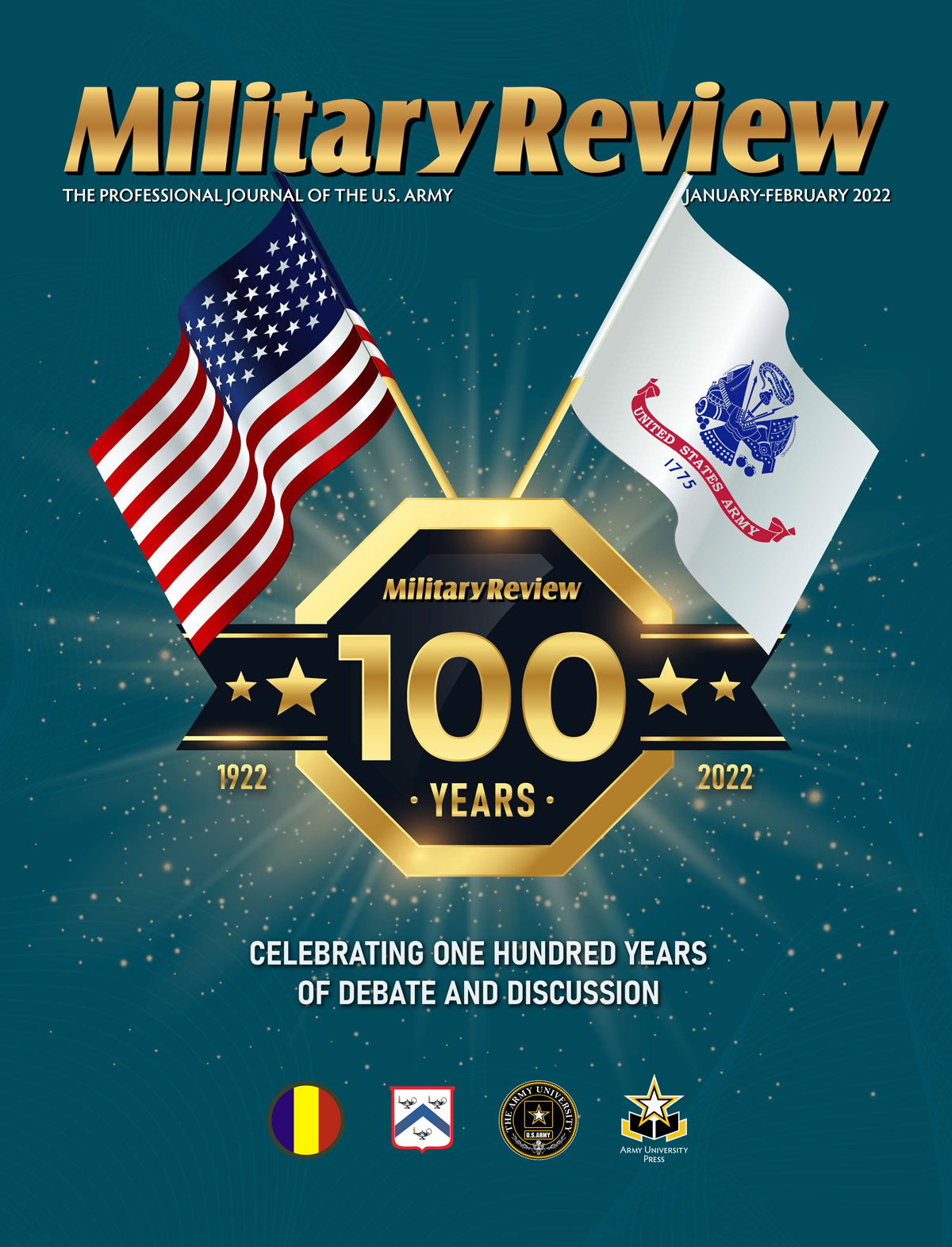In the immediate aftermath of the First World War (1914-1918), a publication was formerly established in 1921 by general order within the General Service Schools (forerunner to the Command and General Staff College) at Fort Leavenworth, Kansas for the explicit purpose of providing to the faculty and students an exhaustive review of both domestic as well as foreign published material relevant to study of military arts. It was first titled, Instructors’ Summary of Military Articles. Thereafter that publication evolved into Military Review: The Professional Journal of the U.S. Army, which for more than 100 hundred years since its establishment has provided to soldiers of all ranks as well as civilian contributors a forum for research and debate as well as for expressions of values and intellectual concerns related to the profession of arms.
Starting in 1962, Military Review began publishing anniversary editions to update readers on notable articles published in the previous decade subsequent to the previous anniversary edition as well as report on any key changes to the publication itself. To illustrate the value of Military Review as a historical research tool, we invite you to browse the selected articles noted in the table of contents in each to get a sense of the issues of concern that prevailed within the military in the decade in which each was published. These editions can be accessed by using the icons below.

One of the valuable features of Military Review for scholarly researchers as well as military enthusiasts generally is that it provides samples of thought and debate decade by decade on diverse subjects as the U.S. Army evolved from a relatively small land force in the 1920s to become the major land force of the world’s preeminent military power in the later decades of the 20th Century. To illustrate, we have provided examples of articles representing each decade listed under categories of common relevance to the military over time that reflect this evolutionary progression. The sampling of articles offer brief but concrete blocks of information and opinion revealing many of the nuances of the major debates of the day associated with doctrinal trends and impact of new technologies together with their ethical impacts. Notably, some articles reflect changing social attitudes of U.S. civil society that were occurring. After browsing the small collection below, we invite you to peruse other editions beginning with the very first edition published in 1922.
In addition to articles discussing topics of common institutional military concern, articles appearing in Military Review often reflect the keen interest and the shared anxiety of professional soldiers reacting to the events of their day, especially with regard to emerging threats as well as observations pertaining to U.S. involvement in actual military deployments. Additionally, among topics of recurring concern are those related to unconventional and guerrilla warfare as well as extreme concern for dealing with the prospect of having to deal with unconventional weapons. Finally, Military Review occasionally published articles that stretched imaginative boundaries and were just “odd ball.” As in the previous lists provided, the samplings of articles offered here are primarily contributions from more junior authors, who were by far the most numerous contributors. The articles noted in this are but a few of many dozens of similar articles published regarding events of keen interest to the professional soldiers of the decade which the articles represent.
Periodically, Military Review publishes compilations of previously published Military Review articles that focus on single or families of related topics dealing with a specific concern, and usually at the request of Combined Arms Center senior leadership. For example, Military Review published several compilations of articles related to counterinsurgency and related stability operations during the so-called Global War on Terror (GWOT), which subsequently became key class handouts to members of the military studying diverse ongoing insurgency conflicts, especially from 2003 to 2010. Published special editions can be accessed by using the icons below.